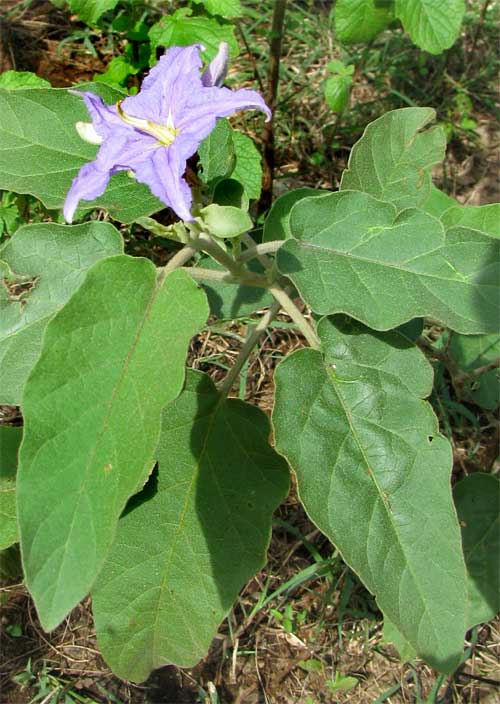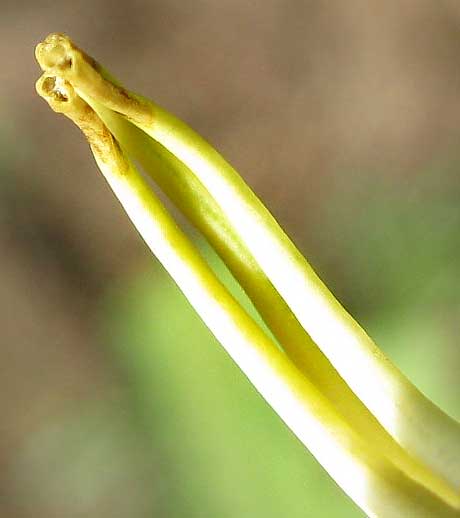Excerpts from Jim Conrad's
Naturalist Newsletter
from the September 15, 2008 Newsletter written in Sabacché and issued from a ciber in nearby Tekit, Yucatán, MÉXICO
SOLANUM'S ANTHERS
Below you can see one of the most conspicuous roadside weeds flowering here nowadays. It's a member of the huge genus Solanum, the Nightshade Genus of the Nightshade Family, the Solanaceae. I'm guessing that it's SOLANUM TRIDYNAMUM, known in Maya as Ik'om ya'ax nik.

This plant's purple flowers, about the diameter of a US silver dollar, show a curious feature common to most Solanum blossoms. Since members of the genus Solanum often are edible (Potato and now Tomato reside in it), medicinal and/or poisonous, it's a good feature to know, so you can recognize a Solanum when you meet one.
Solanum flowers generally have their petals united into shallowly bell-shaped to saucer-shaped "gamopetalous" (petals united) corollas, like the one in the picture. That's not unique to Solanums, though. What's distinctive is the turned-up yellowish thing emerging from the corolla's center. Those are anthers, which are the male stamens' baglike items that split open at maturity to release pollen. Now, here comes what's so neat about most Solanum anthers:
The vast majority of anthers of other plants split along their sides to release pollen, but most Solanum anthers open with roundish pores or holes at their tips, not long slits. A fine shot of the anther-tip pores of our Ik'om ya'ax nik is shown below:

Not all Solanums possess gamopetalous corollas and anthers with pores at their tips, but if you see that combination in an unknown plant, call it a Solanum with fair confidence. One oddball Solanum is the Tomato, whose anthers open by slits along their sides.